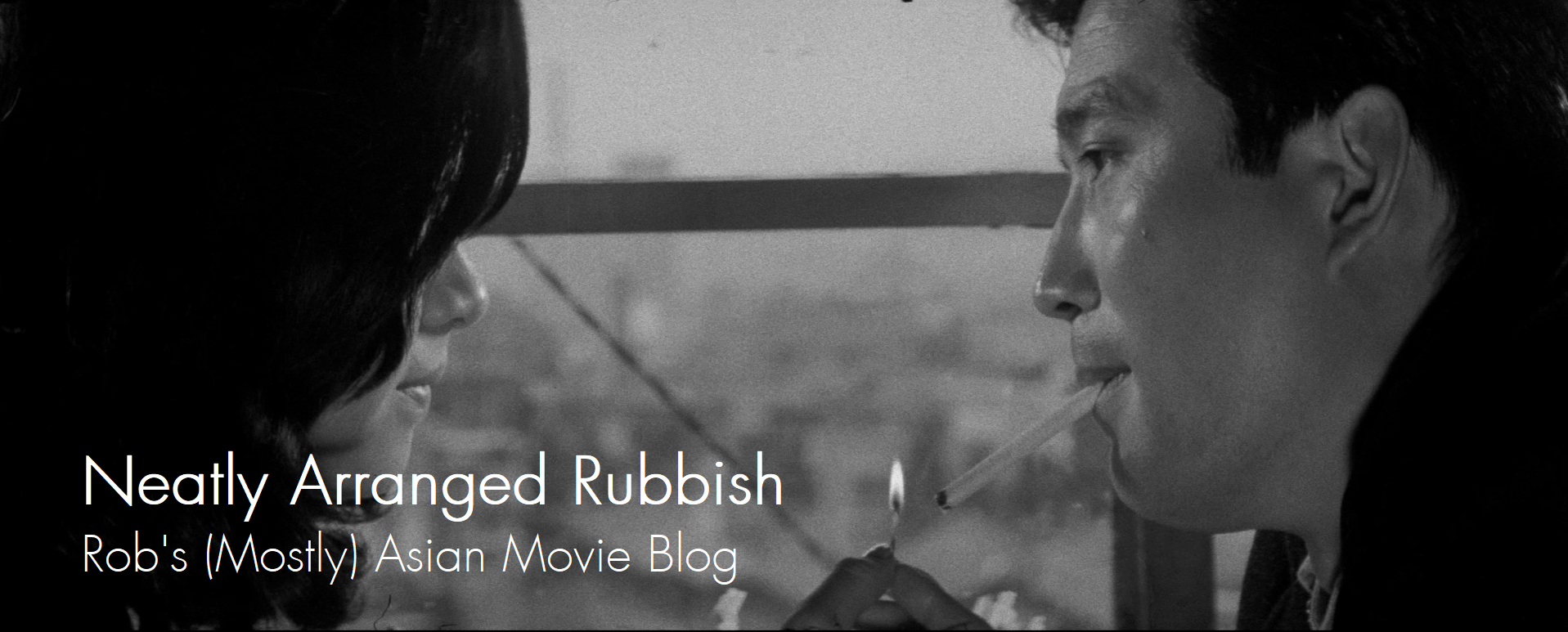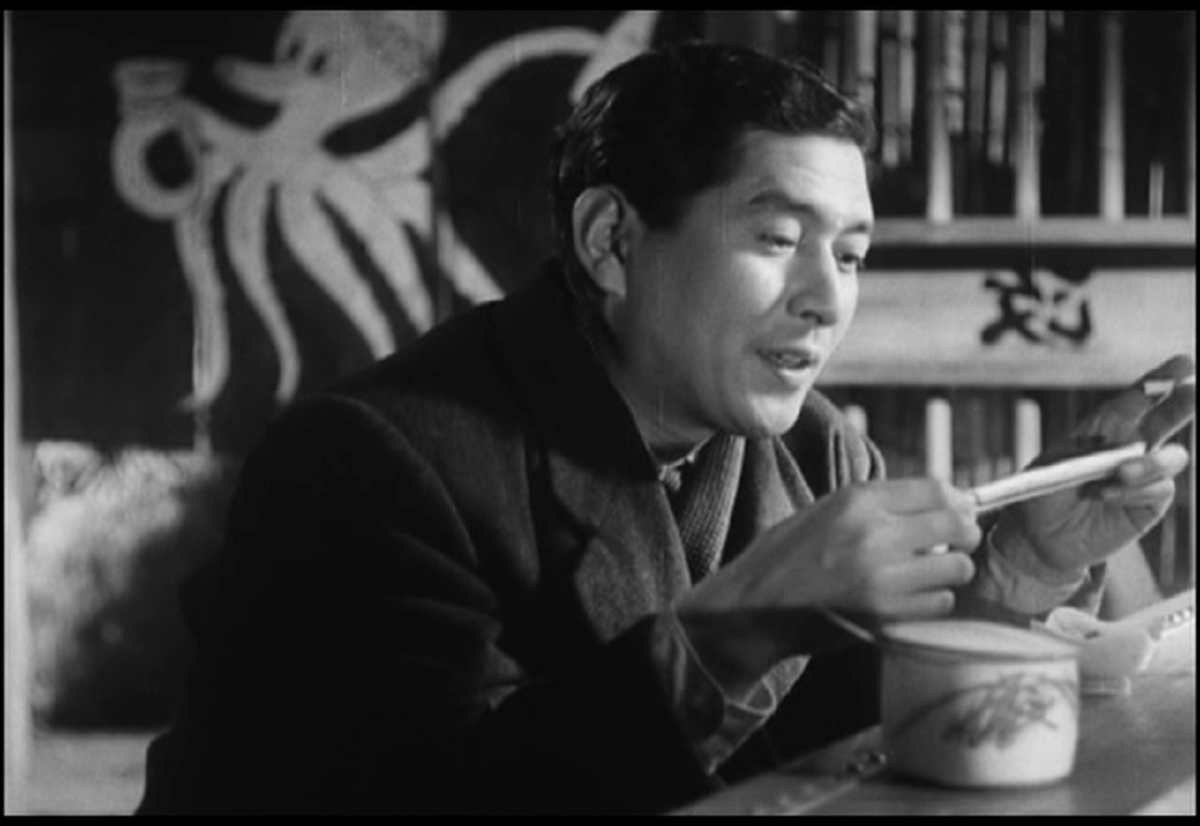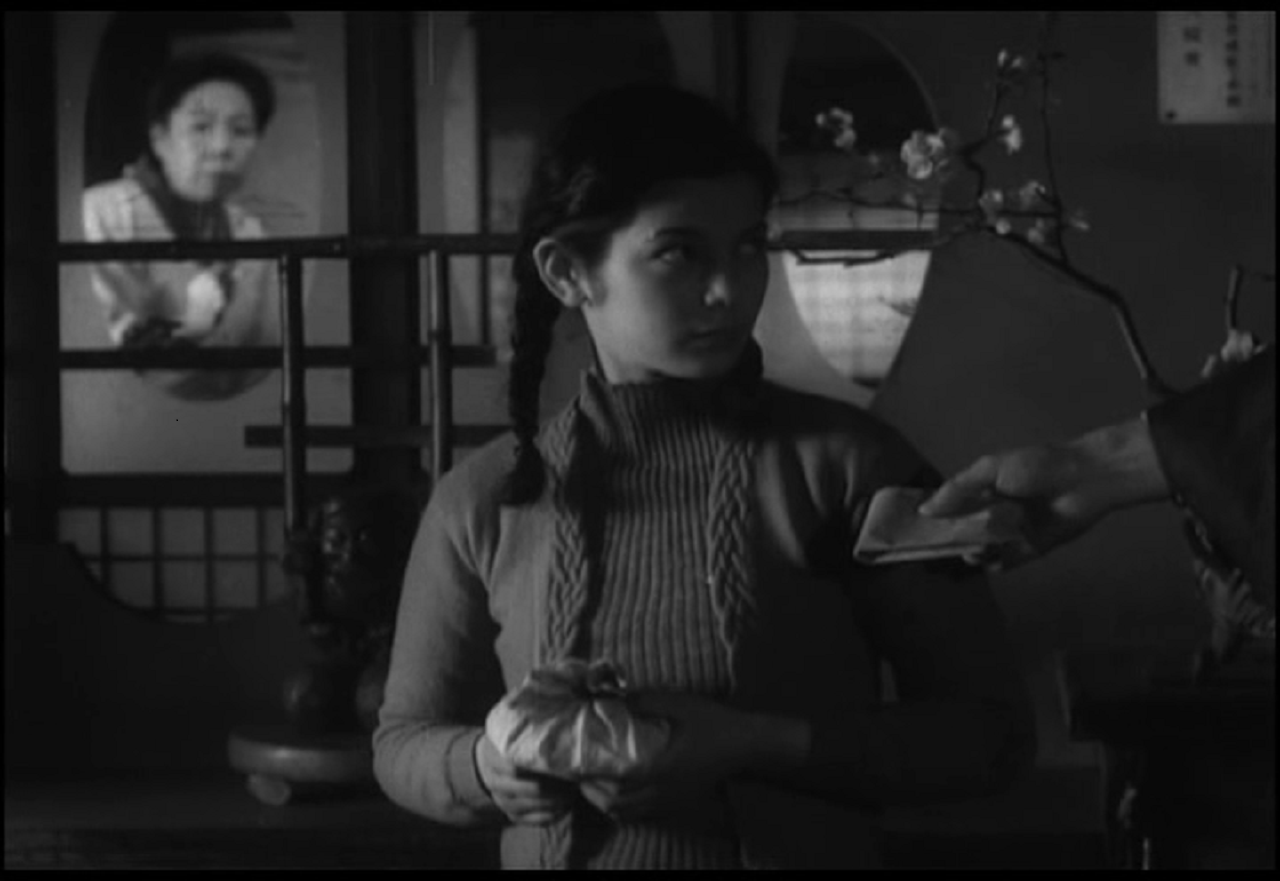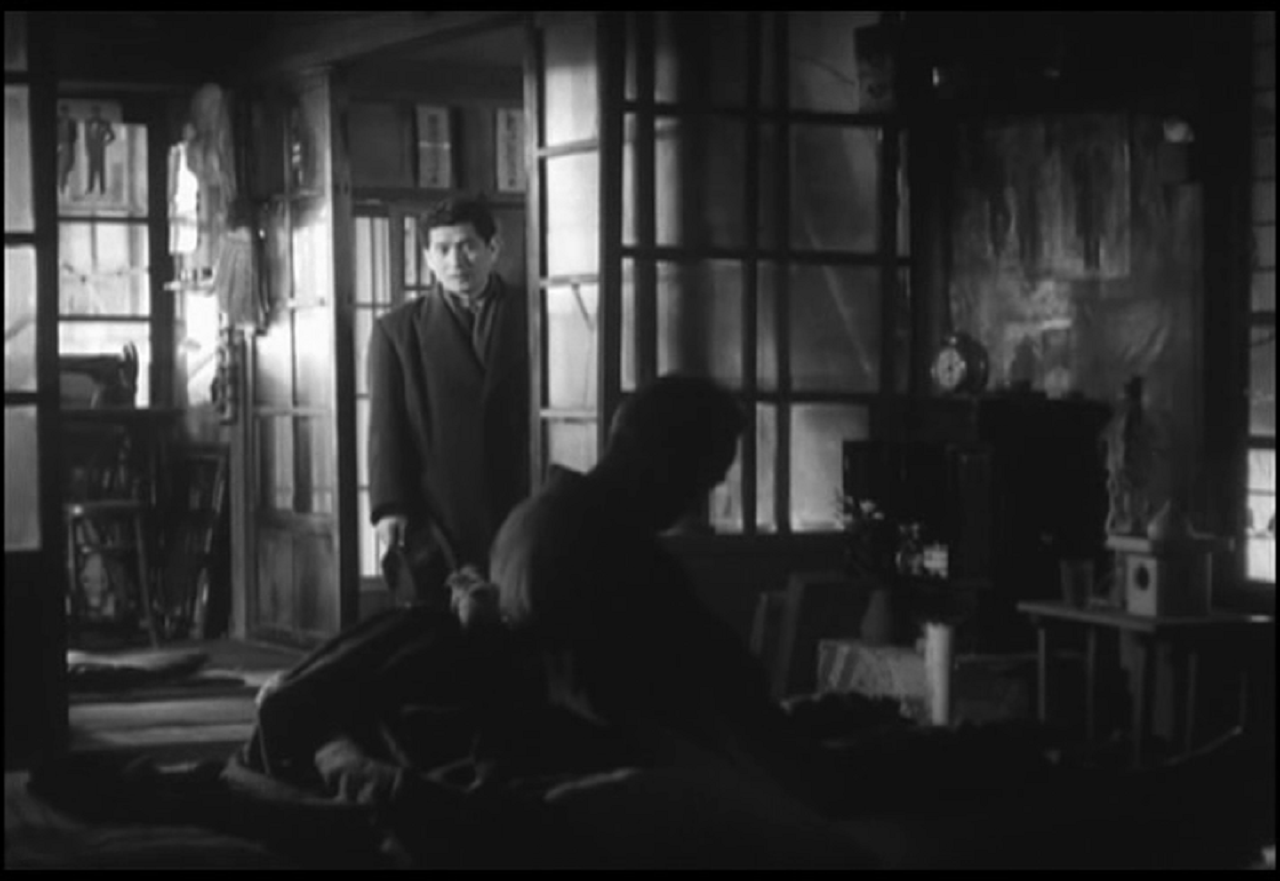Last Updated on December 1, 2020 by rob
Mr. Mita (Shuji Sano) a Tokyo insurance clerk demoted after punching a superior at work finds new lodgings at the titular inn. Confronted by a hard-hearted landlady, her lazy brother Ossan, overworked servant girls Oyone, Orika and Otsugi, lecherous tenant Mr. Noro, poverty stricken seamstress Omitsu (Sachiko Hidari), visits from friends Tawana and geisha Miss Uwabami (Nobuko Otawa), Mr. Mita finds himself inexorably caught up in the hardscrabble lives of those around him.
A masterpiece of Japanese humanist cinema with deeply involving characters struggling in a world where money rules. It’s well acted, both funny and surprising (Miss Uwabami, the geisha who arrives to visit Mr. Mita one evening and immediately sets the servants gossiping turns out to be anything but the whore everyone expects) and consistently impressive in the way it pulls you into the unfolding drama without ever seeming to raise its voice. All the characters here are beset with terrible financial hardships but Mr. Mita’s innate sense of decency means he can’t turn his back on any of them. Shuji Sano’s superbly subtle performance – not least the flashes of exasperation and irritation he displays at the constant interruptions on his time – means his character never becomes some sort of unbelievable do-gooder.
Mr. Mita puts on a cheerful front but underneath he has his own heartache in the guilt he feels at causing his mother to worry about him and the obligation he’s inadvertently imposed on best friend Tawana to keep an eye on him at his mother’s behest. At first Mr. Mita seems more observer than participant in the mini-dramas unfolding around him (there’s a lovely moment in which Otawa’s geisha refers to him as a star in the sky looking down on everyone) until his conscience is prodded by Orika, a maid so desperate for money to support her out of work boyfriend she tries to steal money from his room. I found the film vaguely reminiscent of Sturges Sullivan’s Travels (1941)). It has something of that same idea – that of a man from a better class of society insulated by education and money who drops down amongst the hoi polloi and discovers by mixing with them what life is really about.
There’s also what may be a subtle dig here at the causes of this new world when Mr. Mita discovers the expensive blanket he purchased supposedly from England is a fake. The blanket comes wrapped inside a movie poster for the Hollywood film City That Never Sleeps (1953). Was this Gosho’s way of implying that the root cause of all his character’s torments was baleful foreign influences corrupting traditional Japanese values? Could be. Then again he might just have been paying tribute to a country whose movies he admired! The performances are splendid across the board and I especially liked Nobuko Otawa as the geisha whose unrequited love for Mr. Mita is so touchingly underplayed and Sachiko Hidari as the poverty-stricken seamstress, Omitsu. What’s great is that although both suffer (the latter especially so) both find it within themselves to keep going and not give up.
Gosho’s film has a marvellous way with your emotions. It can plunge you into despair at a character’s plight one moment (Otsugi’s futile pleas with the landlady to be allowed time off to visit her child) before sending your spirits soaring the next (the life-affirming spectacle of the pretty girl who keeps beating Mita to the postbox and whom he admires from afar). The film’s affection for its characters extends even to the penny-pinching landlady who makes her servants lives such hell but whose plaintive “Dear..” – uttered in a moment of quiet despair to the photo of her deceased husband when it looks as though she’s going to lose her inn – makes touchingly clear that even she’s not quite the selfish monster she appears to be.
The technical aspects are also superb. Joji Ohara’s cinematography is an absolute knockout with splendidly moody, low-key lighting effects for the inn interiors and Omitsu’s home rubbing shoulders with the poetic realism of a sunlit canal in the early morning mist. In fact the lighting effects are so good they seem very much a character in their own right. A scene in which Mr. Mita calls at Omitsu’s home only to discover her father dead and the girl sitting disconsolately on the stairs relies almost entirely on Ohara’s lighting effects to sell the impact and it’s a stunner. The other major contribution is Yasushi Atagakawa’s score – a wistful, insistent melody built around what sounds like the beat of a human heart – that’s very sparingly used but enhances every scene it’s in. It’s a kind of musical analogue to this portrait of people who struggle on despite the direst of circumstances.
The film culminates in a celebratory farewell party for Mr. Mita attended by those whose lives he’s touched in which the film’s theme – that we must try to smile in life even though we may be crying inside – is delivered in beautifully bittersweet form. Moreover, it feels honest and truthful, not at all saccharine or sentimental. “Money’s everything. What happened to humanity?” wonders Mr. Mita in one of his darkest moments and the genius of the film is to find the answer in acts of kindness motivated not by greed or ambition but by empathy for the suffering of others. As I said at the top, this is clearly a masterpiece and as good as anything from Japanese cinema in that decade. Those familiar with the period will know just how high praise that is but An Inn At Osaka deserves every bit of it.




